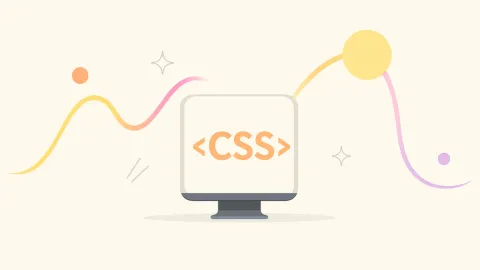SEO Web Design Guide: Complete 2025 AI-Era Search Optimization Strategy

Quick Answer
AI-era SEO has shifted from keyword stuffing to user experience and content value, focusing on Core Web Vitals, E-E-A-T authority building, and content optimization strategies for AI search engines.
AI-Era SEO Is Completely Different
Having a website is essential for doing business in the digital age.
But in 2025, SEO is no longer just about “keyword stuffing” or “link building”! With the rapid evolution of Google AI algorithms, search engines now prioritize genuine user value and website experience.
Core changes in modern SEO:
- Google uses AI to understand content intent, not just keywords
- User experience metrics have become key ranking factors
- E-E-A-T (Experience, Expertise, Authoritativeness, Trustworthiness) is more important than ever
- AI-generated content requires special optimization strategies
What is Modern SEO? Why is it More Important Than Ever?
SEO (Search Engine Optimization) is the practice of adjusting your website by understanding how search engines work, thereby improving your website’s ranking in search results.
Why is SEO so important?
Imagine you’re a coffee bean merchant. When consumers search for “premium coffee beans recommendation,” if your website ranks on the first page, you have 10 times more exposure opportunities than competitors ranked lower!
2025 SEO statistics:
- About 70% of website traffic comes from search behavior
- First-page search results get 92% of clicks
- Voice search accounts for over 35% of all searches
- AI search (like ChatGPT, Bard) is changing search habits
Being able to continuously attract visitors to your website without advertising - that’s the magic of SEO!
The Three Pillars of SEO Success in 2025
Modern SEO is no longer a single technique, but requires technical optimization, content quality, and user experience working together:
🏗️ Pillar 1: Technical SEO Optimization (Website Infrastructure)
👥 Pillar 2: Human-Centered User Experience
🤖 Pillar 3: AI-Era Content Strategy
Let’s dive deep into the implementation points of each pillar!
Pillar 1: Technical SEO Optimization - Website Infrastructure
Core Web Vitals: Google’s Most Important Performance Metrics
Three key indicators:
-
LCP (Largest Contentful Paint)
- Target: Under 2.5 seconds
- Impact: First browsing experience
- Optimization: Image compression, CDN acceleration, code optimization
-
FID (First Input Delay)
- Target: Under 100 milliseconds
- Impact: Interactive response speed
- Optimization: Reduce JavaScript execution time, use modern frameworks
-
CLS (Cumulative Layout Shift)
- Target: Under 0.1
- Impact: Visual stability
- Optimization: Set image dimensions, avoid dynamic content insertion
Mobile-First Indexing
Google now uses mobile websites as the primary indexing source:
Essential technical requirements:
- Responsive Web Design (RWD)
- Touch-friendly interface design
- Fast mobile network loading speed
- Appropriate mobile text size and spacing
Testing tools:
- Google PageSpeed Insights
- Google Mobile-Friendly Test
- Chrome DevTools Lighthouse
Pillar 2: Human-Centered User Experience
Designing User-Friendly Website Architecture
Modern users have only 3 seconds of patience! Your website must allow users to instantly understand and find the information they need.
Website architecture design principles:
Brand website architecture:
- Homepage (clear value proposition)
- About us (build trust)
- Services (solutions)
- Case studies (social proof)
- Blog (content marketing)
- Contact (conversion action)
E-commerce website architecture:
- Homepage (product highlights)
- Product categories (clear navigation)
- Member system (personalization)
- Shopping cart (smooth checkout)
- Customer support (build trust)
- Logistics tracking (complete experience)
User Experience Optimization Points
-
Navigation design
- Main menu should not exceed 7 items
- Use breadcrumb navigation
- Search functionality should be clearly visible
-
Content presentation
- Use clear heading hierarchy (H1-H6)
- Moderate paragraph length (3-4 lines)
- Include relevant images and charts
-
Interactive design
- Buttons have clear click feedback
- Simplified form filling process
- Clear and helpful error messages
Pillar 3: AI-Era Content Strategy
How Google AI Understands Your Content
Google in 2025 uses Gemini AI to understand web content. It no longer just looks at keywords, but understands:
- Content intent: What problem does your content really want to solve?
- Content depth: Do you provide complete, detailed answers?
- Content freshness: Is the information updated in a timely manner?
- Content authority: Does the author have professional knowledge?
AI-Optimized Content Creation Strategy
1. Topic Cluster Strategy Don’t just write for single keywords, but build complete topic ecosystems:
Core topic: "Premium Coffee"
├── Coffee bean selection guide
├── Coffee flavor comparison by region
├── Hand-drip coffee equipment recommendations
├── Coffee storage methods
└── Coffee roasting level differences2. Search Intent Optimization Provide corresponding content for different search intents:
- Informational searches: “How to choose coffee beans” → Tutorial guides
- Comparison searches: “Light roast vs medium roast coffee differences” → Comparison articles
- Transactional searches: “Premium coffee beans purchase” → Product pages
- Navigational searches: “某某 coffee shop hours” → Store information
3. AI-Assisted Content Creation
Make good use of AI tools to improve content quality:
- Research phase: ChatGPT assists with topic ideation
- Writing phase: Claude assists with content structure
- Optimization phase: Jasper assists with title optimization
- Review phase: Grammarly ensures grammatical correctness
New Methods for SEO Maintenance in 2025
Continuous Optimization Strategy
SEO is not a one-time effort but requires continuous optimization and adjustment:
1. Data-driven optimization
- Use Google Analytics 4 to track user behavior
- Monitor Google Search Console search performance
- Regularly check Core Web Vitals metrics
- Analyze competitors’ SEO strategies
2. Content update strategy
- Publish 2-4 high-quality articles monthly
- Regularly update information in old articles
- Adjust content direction based on search trends
- Establish content calendar
3. Technical monitoring
- Regularly check website loading speed
- Monitor mobile device compatibility
- Ensure website security (HTTPS, SSL)
- Check internal links are working properly
AI-Assisted SEO Monitoring
Use AI tools to automate SEO work:
Monitoring tools:
- Screaming Frog: Website technical SEO analysis
- Ahrefs AI: Keyword opportunity discovery
- Semrush AI: Competitor analysis
- Surfer SEO: Content optimization suggestions
Common SEO Myths Debunked
❌ Outdated SEO Concepts
“Higher keyword density is better” → AI can now identify over-optimization; naturally integrating keywords is more important
“More backlinks are better” → Quality is more important than quantity; relevant backlinks have value
“Meta descriptions directly affect rankings” → Meta descriptions affect click-through rates, indirectly affecting rankings
✅ Correct SEO Strategies for 2025
Focus on user value → Create content that truly solves problems
Build brand authority → Establish E-E-A-T through professional content and social proof
Balance technology and content → Good content needs good technical foundation to support it
Start Your SEO Optimization Plan
Phase 1: Foundation Building (1 month)
- Technical SEO check: Fix basic technical issues
- Website architecture optimization: Establish clear website structure
- Mobile device optimization: Ensure complete RWD design
Phase 2: Content Building (2-3 months)
- Keyword research: Identify target keywords and topics
- Content creation: Publish high-quality targeted content
- Internal linking: Build good content relationships
Phase 3: Continuous Optimization (Ongoing)
- Data analysis: Regularly review SEO performance
- Content updates: Continuously publish and update content
- Technical monitoring: Maintain good website technical status
Remember: SEO is a marathon, not a sprint. Brand websites need at least 6-12 months of SEO management to see some success. In the AI era, focusing on providing genuine user value is more important than any technique!



